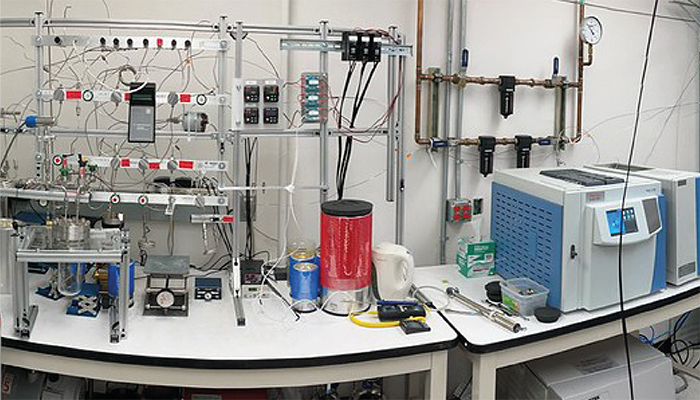
The system developed by Ben Riddell-Young to analyze ancient ice core samples.
Credit: Ben Riddell-Young
A study analyzing ancient methane trapped in Antarctic ice cores has revealed a global increase in wildfire activity during periods of abrupt climate change throughout the last Ice Age. These findings highlight the role of wildfires as a significant feature of past rapid climate shifts, known as Dansgaard–Oeschger and Heinrich events.
Using isotopic analysis of methane extracted from the Western Antarctic Ice Sheet Divide Ice Core, researchers from Oregon State University, USA, identified spikes in methane emissions coinciding with these periods. By employing mass spectrometry to measure the isotopic composition of methane, the study distinguished between sources, pointing to pyrogenic emissions from wildfires as a primary contributor.
“This study showed that the planet experienced these short, sudden episodes of burning, and they happened at the same time as these other big climate shifts,” said Edward Brook, paleoclimatologist at Oregon State and a co-author of the study, in a press release.
The researchers found that these abrupt climate events – characterized by rapid temperature changes and shifting rainfall patterns – triggered cascading effects, including increased droughts and wildfires in tropical regions. The resulting pyrogenic methane emissions, driven by enhanced biomass burning, contributed to rapid atmospheric methane spikes observed in the ice core record.
Lead author Ben Riddell-Young, now a postdoctoral scholar at the Cooperative Institute for Research in Environmental Sciences at the University of Colorado, Boulder, explained the significance of these findings. “These fire events were likely one of the cascading impacts resulting from what triggered the abrupt climate change event. Ocean currents slowed down or sped up rapidly, the northern hemisphere cooled or warmed rapidly, and then this caused abrupt shifts in tropical rainfall that led to increased drought and fire.”
The high-resolution data, derived from ice cores dating back 67,000 years, provided a detailed picture of the relationship between methane levels and abrupt climate changes. “Because this ice is in a place where the annual snowfall rate is high, the record doesn’t go back as far in time as other ice cores, but you get more ice for each year, and you can better see the detail in those years,” Brook added.
The isotopic analysis conducted with mass spectrometry offered a clear link between wildfire activity and methane spikes, providing evidence that wildfires were a prominent feature of these periods. This marks the first comprehensive identification of wildfires as a contributing factor to atmospheric changes during these abrupt events.
Additional research is needed to understand the broader implications of this wildfire activity for the carbon cycle. “Burning produces atmospheric CO2, another greenhouse gas, which also contributes to climate warming. Understanding what this burning really means for the carbon cycle is one of the places the research is headed next,” Brook said.




